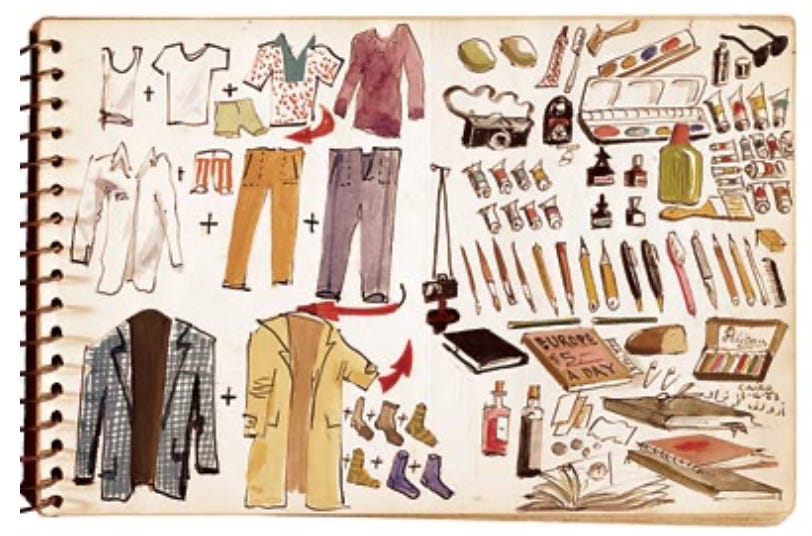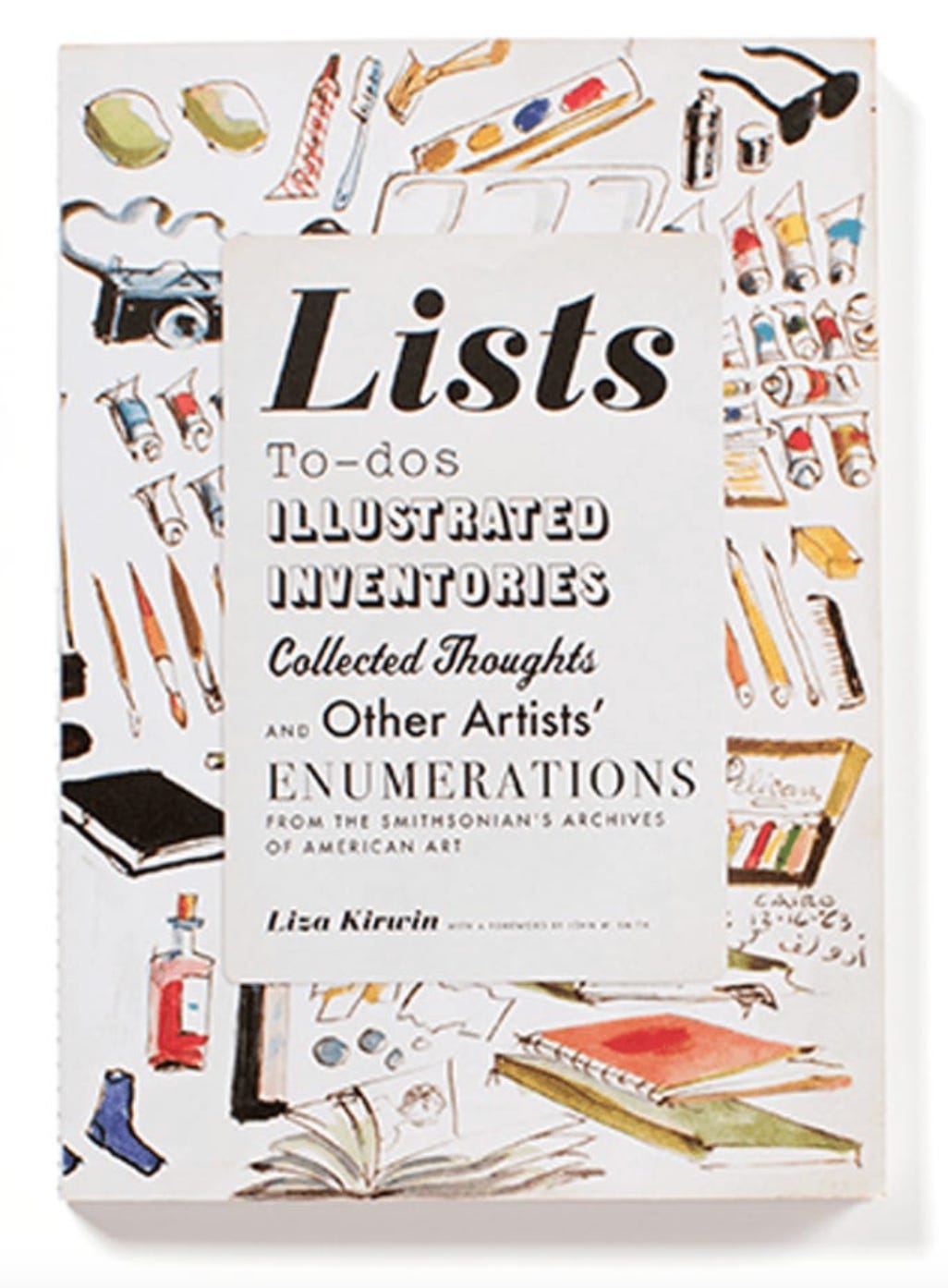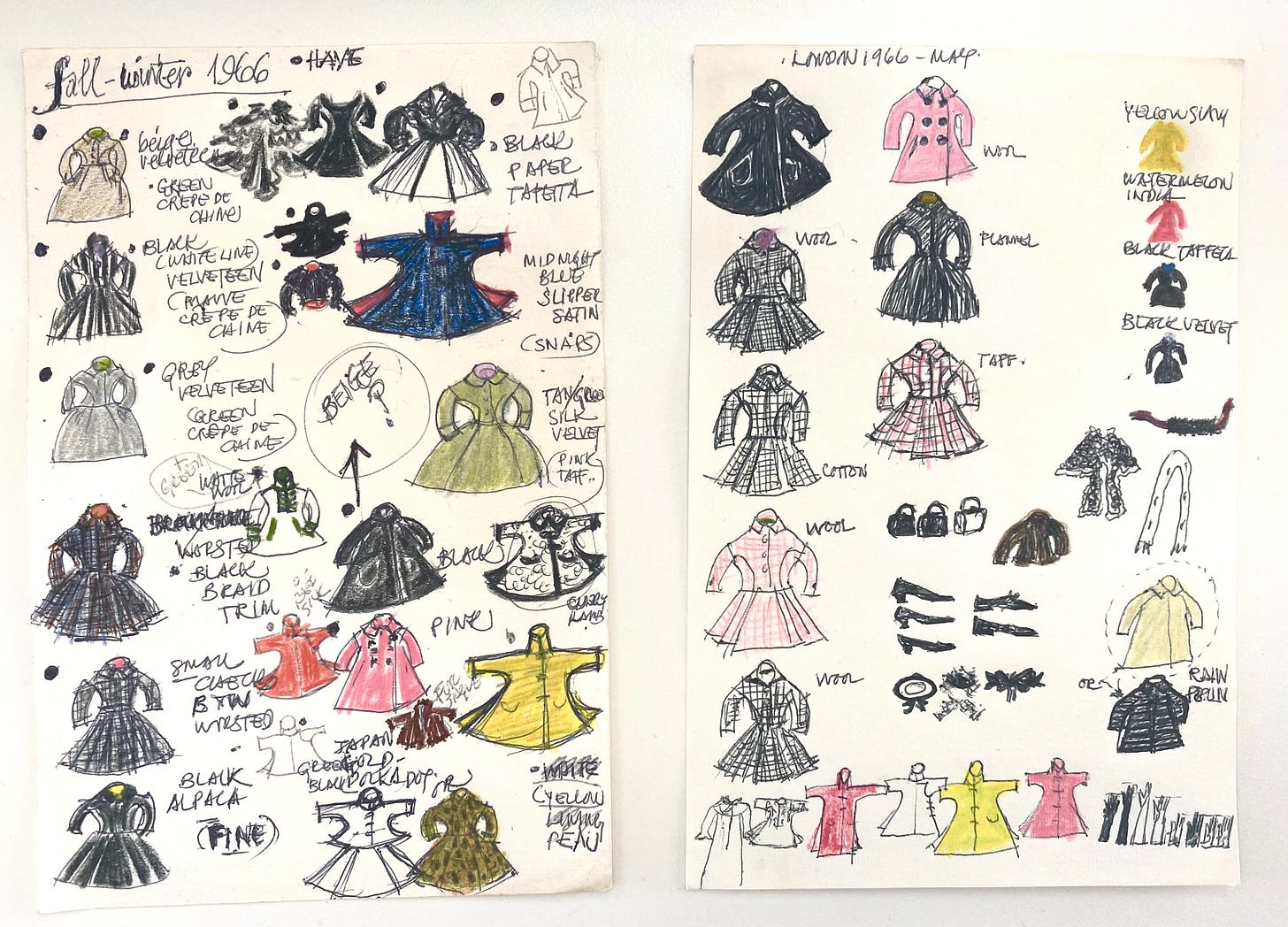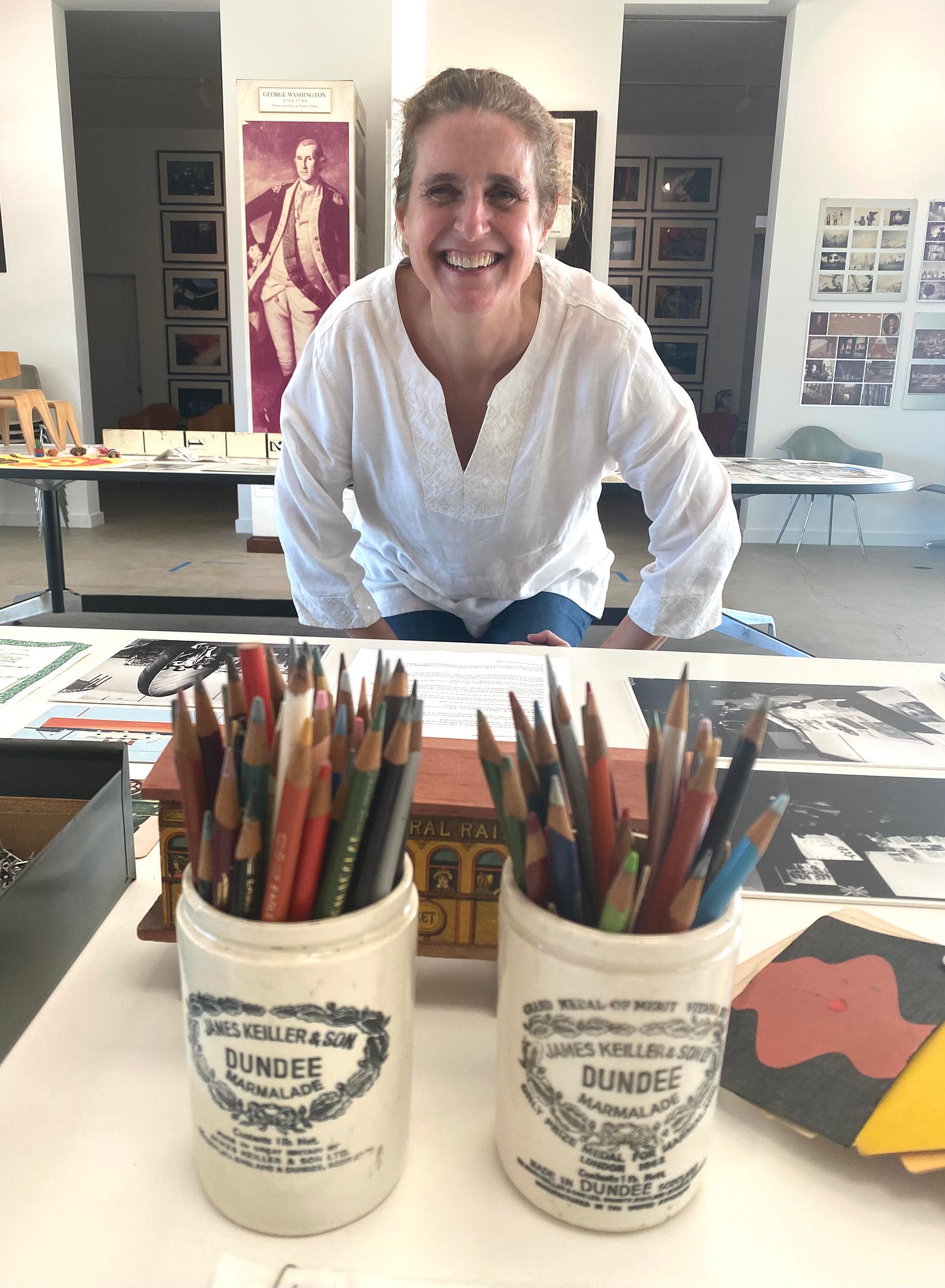Hellllloooooo GUT.
Day 23!! We have just ONE MORE WEEK left. In just seven days you will have drawn every day for thirty days. Even if you missed a few, you’ve stuck with it. You’re doing it. YAY YOU. And if you’re not, no big. It’s not too late to start. Join us today and become part of the GUT creative community. There’s an amazing world happening just right over there...
All this week are focusing on Visual Storytelling. On our first day, we created silly selfies. Yesterday, we learned a little about lettering and made terrific type-characters. All were glorious, unexpected, creative and spectacularly YOU.
Today, we are going to meld some of our first day’s self-reflection with the lettering we played with yesterday and explore drawing through what I believe is the world’s most wondrous organizational tool (and the only one I really use, tbh): THE LIST.
Day 23. Visual Storytelling: DRAWING LISTS
I make lists. You make lists. Even Benjamin Franklin made lists. In an article for Time magazine, Franklin biographer Walter Isaacson wrote: "Franklin loved making lists. He made lists of rules for his tradesmen's club, of synonyms for being drunk, of maxims for matrimonial happiness, and of reasons to choose an older woman as a mistress...”
Oh, Ben.
ANYWAY.

I couldn’t manage a day without making a list. And it made me wonder… why do we make lists? How do they help us, if at all? And is there a best way to make one?
I did a little digging and here’s what I found:
In THE NEW YORKER, Maria Konnikova wrote a piece called A List of Reasons Why Our Brains Love Lists in which she broke down WHY our brains love lists so much. The visual element of a lists helps us remember what’s on it.
When we process information, we do so spatially. For instance, it’s hard to memorize through brute force the groceries we need to buy. It’s easier to remember everything if we write it down in bulleted, or numbered, points. Then, even if we forget the paper at home, it is easier for us to recall what was on it because we can think back to the location of the words themselves.
Well that certainly seems visual, doesn’t it.
Lists also help us break big, messy information into discreet, metabolizable chunks. Our brains prefer that. Also from that same article:
Lists also appeal to our general tendency to categorize things—in fact, it’s hard for us not to categorize something the moment we see it—since they chunk information into short, distinct components. This type of organization facilitates both immediate understanding and later recall, as the neuroscientist Walter Kintsch pointed out back in 1968. Because we can process information more easily when it’s in a list than when it’s clustered and undifferentiated, like in standard paragraphs, a list feels more intuitive. In other words, lists simply feel better.

So we make lists to help us digest information and remember it. They help us think.
Great. But the Grown-Ups Table is about DRAWING. What does drawing have to do with this?
There is a long history of DRAWN list making, and turns out there’s hard science to back up the usefulness of a little extra artistic effort.

From an article in Well + Good :
A team of researchers from the University of Waterloo in Canada conducted a series of experiments that asked participants to write or draw certain words, and then assessed which group was more likely to remember what they wrote or drew later on. The team found that the subjects recalled more than twice as many words they'd drawn compared to words they'd written. Why? The researchers suggest that drawing requires people to use a combination of skills they use separately in other tasks—so instead of just scribbling "apple," the subjects spent time thinking about an apple, picturing an apple, and drawing an apple. "We believe that because drawing results in more interconnected memory cues to draw upon at recall, the memory trace for drawn words is much more likely to be effectively retrieved than when it was simply written, listed, visualized, or viewed at encoding," the study authors wrote.
GUT friends. I said it before and I’ll say it again. Drawing changes our brains. And our hearts. And the world.

With the exception of Jason Polan’s drawing, all the artwork above is from the 2010 Smithsonian exhibition on Lists: To-dos, Illustrated Inventories, Collected Thoughts, and Other Artists' Enumerations, and the accompanying catalog by Lisa Kilwin.

The exhibition featured lists - many of them drawn - “as a key to the lives of some of the most celebrated artists of the last two centuries.”
Another place I’ve spotted a gorgeous illustrated list was while on a visit to the collection at the marvelous Eames Institute (then in Petaluma, CA.. since relocated to Richmond, CA) where I was lucky to get to spend an afternoon with the artist and granddaughter of Ray and Charles Eames, the wonderful artist and chief curator of the Eames Institute, Llisa Demetrios. (Fun fact, Llisa is an active GUT member - you may see her in the chat. Everyone say HI LLISA!)
Amongst the many treasures Llisa shared with me, this stood out: a hand drawn list of Ray Eames’ Fall and Winter wardrobe.

I don’t know about you, but I LOVE the idea of making a drawn list of my wardrobe. I feel the same way about my clothes as I do about TV: so much to watch, and there’s nothing on. A drawn lists might help me see and remember what I have, and be helpful when I need to decide what to pack for a trip.

Speaking of packing for a trip, I have one more drawn list to share with you before we get to drawing. Ages ago, I made a drawn list for my dear friend Maria Popova’s Marginalian (then titled brainpickings.) Maria wrote a wonderful piece featuring a book about the legendary journalist Nellie Bly her 80-day voyage around the world way back in 1889. Maria asked me to illustrate Nellie Bly’s packing list to accompany it. Here it is:
What a hero Nellie Bly was. Not only with the whole globe trotting, but for her travel packing skills. I take six times as much with me on an overnight trip!
Alright, enough inspiration. Let’s turn our attention to making our own drawn lists. And let’s do it together.





